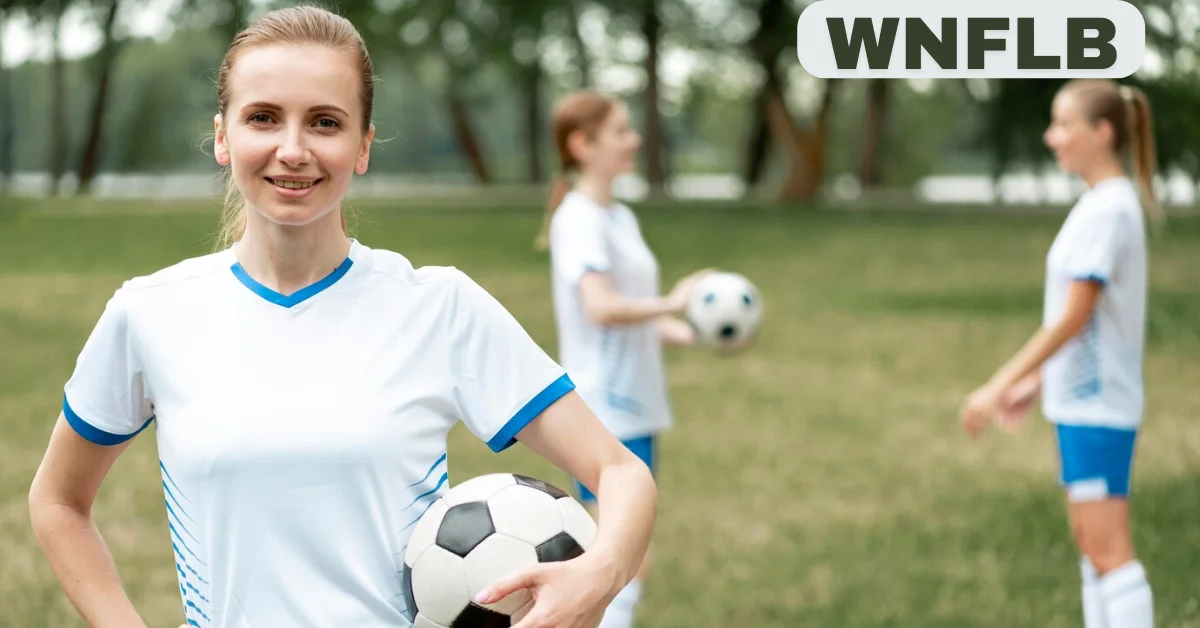Introduction: What is WNFLB?
Women’s football is more than just a game; it’s a movement. The Women’s National Flag League of the United States, or WNFLB, stands at the forefront of this exhilarating shift. With its mission to empower women athletes and break down barriers within the sport, WNFLB has become a beacon for aspiring players everywhere. This league not only showcases incredible talent but also fosters an inclusive environment where women can thrive on and off the field. Let’s dive into how WNFLB is transforming women’s football and setting new standards for future generations.
The History of Women in Football
Women’s involvement in football dates back to the late 19th century. Early matches showcased their passion for the sport, despite societal norms that often sidelined them.
The first women’s football match took place in England in 1895, capturing headlines and drawing large crowds. However, this initial enthusiasm faced backlash. In 1921, the Football Association banned women from playing on its affiliated pitches, a decision that stunted growth for decades.
Despite these challenges, grassroots movements flourished throughout the mid-20th century. Women’s leagues began forming independently as players sought opportunities to compete.
The tides started shifting again in the late 20th century when visibility increased through international tournaments like the Women’s World Cup. The rise of female athletes inspired younger generations and ultimately reshaped perceptions about women in sports.
Each milestone reflects resilience and determination—elements woven into women’s football history that continue to inspire change today.
Challenges Faced by Women in the Sport
Women in football face significant challenges that can hinder their progress. Societal perceptions often limit opportunities for female athletes. Many still see the sport as predominantly male, which discourages young girls from pursuing their passion.
Financial support is another hurdle. Women’s teams typically receive less funding than men’s teams, affecting training facilities and resources. This disparity impacts everything from recruitment to marketing efforts.
Media coverage also plays a critical role in promoting women’s football. The lack of visibility means fewer sponsorship deals and lower public interest, perpetuating the cycle of underrepresentation.
Additionally, balancing sports with personal life remains a struggle for many female players. Family responsibilities can conflict with rigorous training schedules, making it difficult to fully commit to the sport they love.
These barriers create an uphill battle for women striving to make their mark on the field while fighting for equality off it.
WNFLB: Empowering Women in Football
The WNFLB stands as a beacon of hope for aspiring female athletes. It creates an inclusive platform where women can showcase their skills and passion for football.
By fostering talent through structured leagues, the organization empowers players at all levels. Women are not just participants; they become role models within their communities.
Training programs and workshops offered by WNFLB focus on both athletic performance and personal development. They cultivate confidence, teamwork, and leadership skills among players.
Additionally, partnerships with schools and local clubs widen access to training opportunities. This grassroots approach ensures that young girls see a future in football.
Through media engagement and community outreach, WNFLB elevates women’s sports visibility. The stories shared inspire others to break barriers in traditionally male-dominated arenas.
WNFLB is more than a league; it’s a movement dedicated to changing perceptions around women in sports forever.
Success Stories of Women in WNFLB
Women in the WNFLB are rewriting the narrative of football, showcasing their talents and determination. Players like Jessica “Jax” Blackwood have become household names through sheer grit. Jax led her team to victory in a championship match, proving that passion can overcome obstacles.
Another standout is Mia Rodriguez, who not only excels on the field but also advocates for young girls interested in sports. Her outreach programs inspire countless aspiring athletes to chase their dreams relentlessly.
These success stories extend beyond individual achievements. Teams within the WNFLB have fostered supportive communities where players uplift one another. This camaraderie has birthed new opportunities for women coaches and trainers as well.
The visibility of these remarkable figures encourages more women to join the sport at all levels, helping change perceptions along the way. Their journeys represent hope and resilience, marking a significant shift in women’s football history.
The Impact and Future of WNFLB
The WNFLB is reshaping the landscape of women’s football. It offers a platform where female athletes can showcase their talents and compete at high levels. This visibility is crucial for inspiring the next generation.
As more women engage with the sport, community support grows stronger. Teams foster local connections, encouraging young girls to pursue football without hesitation. The ripple effect extends far beyond the field.
Sponsorships are on the rise too, as brands recognize the potential of investing in women’s sports. Increased funding translates into better training facilities and resources for players.
Looking ahead, it’s clear that WNFLB will continue to break barriers and push boundaries. The future holds promise not just for female athletes but also for advancing gender equality in sports overall.
With each passing season, momentum builds toward a more inclusive environment where everyone has a chance to shine in football’s spotlight.
Conclusion: The Importance of Inclusivity in Sports
Inclusivity in sports goes beyond just participation. It fosters a sense of belonging and community. The WNFLB is paving the way for women who have long been sidelined in football, creating opportunities and breaking down barriers.
Women deserve equal representation on the field. With organizations like WNFLB leading the charge, we are witnessing a shift towards greater acceptance and celebration of female athletes. This movement not only empowers players but also inspires future generations to dream big.
Sport should be an avenue where everyone can thrive regardless of gender. As we support initiatives that promote inclusivity, we move closer to a world where every woman feels valued in football and beyond. Embracing diversity enriches sports culture, making it more vibrant and compelling for all fans.
The evolution witnessed through WNFLB showcases how powerful change can be when communities unite for a common cause—equality in athletics. By continuing to champion women’s rights within sports, we’re ensuring that every aspiring athlete has the chance to shine brightly on any playing field they choose.
FAQs
What does WNFLB stand for?
WNFLB stands for Women’s National Football League.
When was the WNFLB founded?
The league was founded in 2020.
How many teams are in the WNFLB?
There are currently eight teams in the league.
What is the mission of the WNFLB?
To promote fairness, innovation, and visibility for women in football.
Who can play in the WNFLB?
The league is open to female athletes who meet team requirements.

